|
Oh, the holidays: a time where we tend to consume copious amounts of cheese, a wide variety of sweets and bottomless glasses of festive cocktails. Spreads like these, coupled with high-vibe social gatherings, are one of life’s greatest pleasures. We often find so much love and joy in these moments, between spending time with people we enjoy and indulging in delicious foods that remind us of the Christmas season. They signal to us that it’s time to take a break from the regular routines of life and embrace a slower, or at least more festive, way of life. For some, overindulging during the holidays, or consuming foods that aren’t part of our regular diet, can be stressful and leave us ridden with guilt, feeling like it’s something we now must “fix”, as if something has been broken or ruined. After stepping on the scale for the first time all month, classic New Year's resolutions might begin to form in your head as you make frantic plans to “work it off” or get back to your “pre-holiday” body. If this resonates with you, I encourage you to pause and reach for some perspective before diving head-first into the river of self-loathing. One, know that, above all else, your value as a human has nothing to do with a fluctuating number on the scale. If you struggle to come to terms with this truth, your journey needs to begin here and it may require the support of someone who can help guide you in building a healthy relationship with the scale and understanding what self-worth truly is. Secondly, be gentle with yourself. Give yourself grace and compassion, as you would to anyone else that you love. Why do we struggle so much to offer it up to ourselves? You do not need to wake up tomorrow, guns-a-blazing, ready to morph into the perfect version you have created in your head–the person you feel you now must become since you ate one too many squares from your mom’s dessert platter. When we are gentle with ourselves, we provide the safe place needed to create meaningful change, which is created out of love, rather than fear, guilt and self-hatred. "When we are gentle with ourselves, we provide the safe place needed to create meaningful change..." Once you can approach change from a place of self-love, you’re more likely to find small, sustainable shifts that support the lifestyle you desire. You take action because you know you are worthy of something better. Maybe you focus on water intake or daily movement goals. Perhaps you remove some of the more indulgent, sugar-laden foods that aren’t usually around, but that somehow migrated into your kitchen over the holidays. Maybe you dedicate yourself to including a source of protein with each meal. These small shifts are easily built on each other and when adopted over a period of time, don’t feel hard and unreasonable. They become habits in your day and this is how real change happens. When we throw ourselves into crash diets, they can only last as long as our willpower does and willpower is not infinite. It will run out. Lasting change has to be meaningful, it must produce results and it must be ingrained in the details of our day through the power of habit.
So, please don’t you dare feel an ounce of guilt from holiday indulgence (I say this with 12 exclamation points if you’re living in Ontario in January, 2022. IYKYK). Instead, focus on the feelings you had when you ate that delicious food and sipped on those fancy cocktails, all while laughing and connecting and holding the people you love most in this world. If you’re feeling a tug to make some changes that support your health with the arrival of the new year, I fully support you, particularly in the current state of our world. Taking your mental and physical health into your own hands has never been more important than it is today. But be gentle with yourself. These last couple of years have been rocky, to say the least. We could all use a little love and kindness and that needs to begins with our own self-talk. Small, slow, meaningful shifts can make all the difference and set you on the road to real, lasting health. Happy New Year, from my family to yours!
0 Comments
12/11/2020 0 Comments What's up with A&W's Grass-Fed Beef?This year, Canadian fast-food restaurant, A&W, announced it would source 100% grass-fed beef from right here in Canada. Traditionally, a lot of grass-fed, or at the very least grass-finished beef, would need to come from Australia or New Zealand, but it seems that Canadian farmers are starting to see an opportunity in this market and changing up their model to take advantage. A&W CEO, Susan Senical, said this initiative was developed because customers were demanding higher quality meat, fast-food or not. First of all, to this I say: Bravo, Canada! Changes like this give me hope that society is shifting to a more health-conscious collective. Sure--just because one is eating grass-fed beef doesn’t mean they are the picture of health (because, let’s be honest: that burger is coming with a side of fries), but it’s a step in the right direction. It means people are getting thoughtful about what goes into their bodies. And I like it. I have to admit, when I first heard that A&W was providing grass-fed beef, the skeptic in me immediately went on the defensive. What’s the catch? Some of it is grass-fed? It’s fed some grass among other things? It’s fed a bit of grass, but not grass-finished? I figured, for sure, this was a huge marketing ploy, but that ultimately we weren’t really being offered true grass-fed beef. But the more I read, the more it seems that, in fact, consumers are getting 100% grass-fed beef. Cattle purchased cannot be fed any grain or feed additives. This model is also in support of the regenerative agriculture movement, something we know is extremely important for the health of our planet and food sources. You might also enjoy: Protein: The What, Why and How So there isn’t any catch? Well, that depends on how you look at it… Grass-fed is great. It’s definitely what you want your beef to be, if you can swing it. But that doesn’t mean that the cows haven’t been injected with growth hormones or antibiotics. It sounds like the Canadian restaurant chain has good intentions though, and will do their best to source their beef free of these things, but if you truly want to know what your beef is eating, purchasing from a fast-food chain is likely not your best bet. Try a meat subscription service that works with small, local farms, like NIKU, True Local, or Butcher Box. Services like these make it so much easier to get the nitty gritty on your meat. You can often go right to the farmer’s website, if available. Plus, you feel good knowing you are supporting small, sustainable farms with your purchase. That said, if you’re looking for a fast-food hamburger from time to time, I”m going to have to get on board the A&W train and say, well done. Let’s hope we see more chain restaurants thinking beyond convenience and dollar signs in the future.
Eczema is a common skin condition that many people can relate to. And more and more, we are seeing it show up in our children. In fact, Authors, Kathrine Erlich, M.D. and Kelly Genzlinger, M.Sc., C.N.C., C.M.T.A. of Super Nutrition for Babies say that, now, 1 in 2.5 (40%) of children have allergies (often presenting as eczema), compared to 30% of adults.
I started to do a deep dive into eczema treatments when my son turned two months old and broke out in eczema from head to toe. It was an extreme case that, like it would any parent, caused me extreme stress. I worked very closely with my naturopath and paediatrician to get to the root cause, as well as treat his immediate symptoms. Today, Austin is 10 months old and is clear skinned and thriving. We still deal with a few patches of eczema here and there, but it is nothing compared to the case we were managing several months ago. And we did it naturally. So, how did we get here? First, it’s important to address how common eczema is today. Why is that and what can we do about it? The Nourishing Traditions Book of Baby and Child Care notes that there has been a major shift in disease patterns over the course of just two generations. Genetically, it would take thousands of years to change as much as we’ve seen. The authors attribute this shift to the many dietary and lifestyle changes that have occurred over the last 50 years. Children spend far less time outdoors, exposed to fewer germs and less dirt; they have fewer close encounters with peers and animals and live in highly sanitized environments. As a result of this shift in lifestyle, our immune systems do not get to flex their muscles as much as they need to fight microorganisms when they come along. We are far more likely to experience a negative immune response because of this.
You might also like: My Homemade Baby Cookie Recipe
Using soothing oatmeal baths to help control inflammation.
Most people, when faced with the challenge of eczema, immediately turn to a cream or other topical treatment to heal a flare up. And although this can be helpful in the short term, it’s so important to understand that skin inflammation is a symptom of something bigger that must be addressed. Otherwise, you will forever be treating the symptom--a band aid solution to a larger issue. If a person’s gut flora is not thriving, due to things like a c-section delivery for babies, poor diet, a high amount of pro-inflammatory foods, additives in vaccinations not properly detoxed by the body, use of antibiotics, chloride and fluoride in water, etc. the cell-to-cell junctures of the gut are weakened. The villi become damaged and flattened and can’t do their job. Healthy villi produce enzymes called disaccharides, which break down foods like grains and milk products. Without them, digestion of these foods becomes difficult and the body gets run down with immune system dysfunction, allergies, rashes and asthma. We see holes or leaks in the gut lining, which allow allergenic proteins into the bloodstream. The immune response to these foreign bodies in the bloodstream can show up as--you guessed it-- eczema.
This helps us understand why going deeper than the skin outbreak is important in solving the problem of eczema. First, we must figure out why the body is having an immune response and begin there. For many people, this will be a trial-and-error process, as it was (is) for us. This can be frustrating, but a necessary part of the journey. If you’re experiencing eczema with your little one, know that your journey might look different than ours. But by sharing our story, you may have some fresh tools to try out or to talk to your healthcare team about.
"It’s so important to understand that skin inflammation is a symptom of something bigger that must be addressed. Otherwise, you will forever be treating the symptom."
Austin was born via emergency c-section, meaning he didn’t get that push through the birth canal that I had hoped for him, which helps populate a baby’s gut with healthy bacteria. So, even before his skin issues came about, I put him on a probiotic. I used this one. When his eczema began to flare up, I worked with my naturopath who also put him on a second dose containing additional bacteria strands.
He was exclusively breastfed, so knowing that what I was eating may cause him inflammation, I removed all dairy and eggs from my diet, common inflammatory foods. If your child is older and experiencing eczema, removing pro-inflammatory foods is a great place to start. These include: dairy, eggs, gluten, refined sugars, and bad fats like hydrogenated oils. Specifically in the case of foods like dairy and eggs, which may be a big part of your food culture, try removing for at least a month and then slowly reintroducing one at a time, to see if a reaction occurs. In Austin’s case, he still seems to have minor reactions to both of these foods in prolonged doses and will break out in a new (although, thankfully not severe) patch of eczema. So I continue to cycle them, trying small amounts at a time every few weeks. Since we know gut health plays a primary role in healing eczema, I put a lot of emphasis on feeding Austin nourishing, gut-healing foods. From the day he began food, I made meat/bone broth to feed him on its own, as well as mixed it into purees. By slow cooking organic bone-in, skin on chicken legs, it draws out important nutrients and minerals that are incredibly nourishing to the gut. He still loves my homemade broth and eats it regularly. I also use fermented foods and high quality oils to nourish the gut and skin, like flax seed and coconut oil, and use supplements like cod liver oil. With these protocols in place, we watched as Austin's healing began. A common dietary treatment for intestinal dysfunction like what I have described above is implementing the GAPS diet. This is a great place to start if you’re not sure where to start. The Weston A. Price Foundation lays this concept out well: “Whether we are talking about foreign food antigens (food allergies), or auto-immune reactions, the issue is not so much stopping the toxic skin reaction that results in the eczema, but rather sealing and healing the gut in order to stop the leakage of foreign proteins into the blood stream, either from food or other sources. Healing the micro-flora of the gut, healing the micro-villi of the gut, and stopping the absorption of antigenic proteins is the key to stopping the vicious cycle that results in chronic eczema. All of this points to the GAPS diet (Gut and Psychology Syndrome diet), the modified traditional diet, to start healing the gut and restoring the micro-ecology in our GI tract. From a epidemiological perspective, when we moved away from our traditional diet, with its emphasis on lacto-fermented foods, good fats, bone broths and properly prepared grains, we created the situation that has allowed chronic illnesses like eczema to flourish.” There are other treatments you can try to help the body detox like giving sea vegetables in capsule form, which bind heavy metals and other toxins and promote excretion through the bowels. If your child is vaccinated, you can use supplements that help boost the health of the body's systems and decrease inflammation from additives in vaccines that very commonly lead to eczema outbreaks (we use this one). Additionally, the authors of Nourishing Traditions suggest using a topical that includes Sephora as the primary ingredient, a shrubby plant used as an herb in Chinese medicine to counteract allergies by stabilizing the mast cells. And although many people turn to treatment options like steroid creams, although they control the symptom, they will never heal the individual suffering from eczema or fix the root of the problem. They may also lead to other negative side effects that complicate health later in life. Personally, we do keep a very low dose of cortisone cream on hand for any outbreak emergencies, but we use it sparingly and very infrequently with Austin’s long-term health in mind. Homeopathics are another option to incorporate into a treatment plan. We tried sulphur pellets with Austin, and although we didn’t see much improvement, others have had great success. You can also explore psorinum, graphites, and arsenicum album. In terms of treating the immediate symptoms (because no one wants to see their child in discomfort), here are a few topicals that we tried with varying degrees of effectiveness:
Again, this will be trial and error in order to find the topical that provides your little one with the most relief, but the key to comfort is to keep the skin hydrated and prevent any open sores. In the case of open sores in the height of Austin's outbreak, we used Correct-X by Doterra. This was a natural solution to prevent any infection and promote healing. If you or your child has eczema, know that you must begin the healing process from the inside out. Otherwise, you will forever be chasing the symptom. Gut health is paramount for long-term health and we all deserve to achieve this. If you are currently on this healing journey and would like a little more guidance, reach out to me. I would love to support you. Once your baby is old enough to eat solids, but is still lacking the chompers to eat anything and everything, baby cookies, or "teething cookies" as they're sometimes called, are a must. Personally, I like to have them on hand, if nothing else, to use as an activity. Grocery shopping and the baby gets fussy? Have a cookie. On a walk and your baby is getting bored in the stroller? Eat this cookie. Need to keep baby occupied in their highchair while you prep their meal? Cookie. They're a life safer in so many situations. That said, they can often be filled with added sugars and lack any real nutritional value. So, I decided to come up with a cookie that was easy to gum, but also provided sustenance. Enter: my Real Food Baby Cookies. It's an activity and a snack all in one, packed with fibre, healthy fats and protein. Just beginning your baby's journey with solid foods? Check out this Intro to Solids guide, which includes my own real-life experience of my daughter's food introduction from the perspective of a nutrition nut. I'm no stranger to coming up with a healthy swap for a classic dish, like my quinoa breakfast bowl. Dreaming up a cookie recipe that you can feel good about giving your baby seemed like the natural move. And here's the great news: it's easy! There are only 6 ingredients and you likely have most if not all of them in your kitchen right now! You can choose to use quick oats, or grind your oats into a flour if you'd like a smoother texture. My two and half year old loves this recipe too, so if you're cooking for older kids, you could consider mixing in some raisons or pumpkin seeds for added flavour and nutrients. Check out the recipe below and tag me on Instagram if you give them a try! Don't forget to share them with any other mamas out there who are looking to step up their baby-friendly recipe game. Our babes deserve the best :) 8/10/2020 Quinoa Breakfast BowlI know I preach about green smoothies on the regular, and I do love starting my day off with a massive mason jar of green goodness, but there’s a new breakfast obsession that I am throwing into the rotation: the quinoa breakfast bowl. I can’t deny that every now and then I love a good bowl of oatmeal. It’s hearty and warm and holds so many possibilities when it comes to toppings and flavours. That said, even when you buy organic (an absolute must for oatmeal), it isn’t necessarily the best breakfast choice. As delicious as it is, oatmeal spikes blood sugar easily and can also cause bloating for many people. So when I discovered the idea of making quinoa a breakfast food, I was pretty excited.Quinoa is unrefined, gluten free, contains all nine essential amino acids, making it a complete protein and is full of fibre. It doesn’t have the same blood sugar effects as oatmeal, but can achieve the same breakfast results. You can top it with whatever you want! Try nuts, seeds, cinnamon, yogurt, granola, fresh fruit… whatever your breakfast-loving heart desires. This morning, I chose chia seeds, pumpkin seeds, coconut, coconut yogurt, granola and fresh raspberries. Will I still have oatmeal from time to time, or has it been banished from my breakfast regime for good? Of course it hasn’t. I am not an abstainer by nature. I will always maintain that sometimes food is just meant to be enjoyed. That said, I am constantly on the hunt for optimal food choices to have on a daily basis. So, if you’re an oatmeal lover like me but have your blood sugar levels top of mind, give this swap a try and let me know what you think! clean-beauty-swaps.htmlLooking to integrate more healthy swaps in your life? I'll help you clean up your makeup game with my Clean Beauty Review. Ditch the chemicals without sacrificing quality! Sometimes I wonder if it just seems like the topics I’m interested in are becoming mainstream because I live in a sheltered “wellness bubble”, as I like to refer to it as. I surround myself with other health and wellness junkies and it can appear that the vast majority of the population is living a somewhat similar lifestyle to my own. Luckily, something eventually pops that beautiful bubble and I am faced with the reality that, of course, this really isn’t the case at all. Although I do believe more and more people are taking steps to lead a healthier lifestyle in general, there is still such a long way to go in terms of educating the masses on important health related issues and lifestyle choices. It took me a while to even start this post because of its scope. Low-tox living has been at the forefront of my mind lately, but there is just so much to say about it and so much ground to cover, that the idea of writing about it seemed daunting. Too big. And you know how I have a tendency to ramble on… I want to say it all, but that would mean writing a book, not a blog post. Love reviews? Check out my plant-based protein review here! So I decided the best thing to do was pick one area of focus per post and today I am choosing clean beauty. When I first began to detox the body and our home, I started with food. I slowly switched out conventional foods for organic ones and made the added cost of quality, chemical-free foods work for us because it was deemed priority. That was many years ago now. However, one of the last things I did was switch out my makeup for clean, chemical-free (or at the very least, highly reduced) products. And I’m probably not alone in this. Women become particularly attached to their beauty potions and lotions. We have specific brands and products that we’re loyal to and have been using for years. Letting go of that relationship and stepping outside of the comfort zone of knowing what gives you your desired look is a little scary. And, quite honestly, can leave you a little grumpy. I think it took being bombarded with daily messages of clean beauty before I finally uncrossed my arms, rolled my eyes and said, “Fine!" You’ve probably heard that the skin is our body’s biggest organ. What we put on our body is just as important as what we put in it. Although I wouldn’t say I wear a lot of makeup, I wear some form of makeup pretty much every day. Even if it’s only a couple of products. I’ve been doing this since I was a teenager. I’m 33 now. That’s a lot of daily chemical shit storm doses for my biggest organ… (over 5000, actually. I just checked). There are over 1400 chemicals banned or restricted in skincare products by the European Union. In the US, that number is a mere eleven. ELEVEN. My values were clear to me. Health was number one, and I just couldn’t ignore this area of my life any longer because it didn’t align. And so began the journey of switching out drugstore (and even premium) beauty products for natural ones. These aren’t brands that you see advertised on television or in magazines. They are not in mainstream media. So even knowing where to start was difficult. It took research. I read reviews on blogs, watched YouTube videos, searched Instagram… you name it. I started with one product at a time, which made for a slow transition. But, let’s face it, makeup is expensive. Layer that on top of being reluctant to let go of your favourite products in the first place, and the switch likely isn’t going to happen over night. Between testing multiple brands and multiple products (and yes, this was a financial investment), I would say it took me close to a year before I had created a clean beauty routine that I truly loved. But I made the switch. And, today, I really do love my makeup. With that, I am going to share, without bias or sponsors, products that I have fallen in love with in the world of clean beauty. I do think this is quite a personal journey because, of course, we are all different. Skin types and general makeup preferences differ. But I want to offer up my experience to help others the same way all of those internet reviews helped me when I began the careful selection of what to try next. I think the easiest way to organize this is by brand. So I am going to start with a Canadian company whose products I adore. I tried out what felt like 25 different mascaras and, for me, Ilia came out on top. It was dark, long lasting, lengthening and included a brush I now can’t live without. I also love their foundation, when paired with an under eye concealer (a trait that was true of all foundations I tested). It’s lightweight but provides decent coverage and lasts all day. And finally, although I don’t wear a ton of lipstick these days, I always need a bright fuchsia on hand for those rare occasions that require just a little more glam. Ilia provided great colour selection and wearability in this department that packed a punch. Beyond the products themselves, Ilia’s founder and Vancouver native, Sasha Plavsic, boasts a beautiful story of how the company came to be, inspired by her brother’s personal health struggles and her mother’s influence. This is likely a brand that will remain in my collection for many years. Next in my makeup bag you’ll find Beauty Counter. This is a big (and loud!) player in the world of clean beauty and for good reason. I have tried a number of their products and my favourite one, hands down, is their Dew Skin. As the name suggests, this tinted moisturizer leaves your skin looking fresh and hydrated (with the added benefit of SPF). I am obsessed and use it on the daily, either on its own or under foundation. Most days I simply pair the Dew Skin with an under eye concealer and am set. I actually find when I don’t wear my Dew Skin and simply opt for a foundation, I feel like my skin looks a little dull! My second pick with Beauty counter is their mattifying powder. I use this to set an under eye concealer if I am planning on using mascara on my lower lashes (to prevent transfer) or if I need to ensure overall, long-lasting wear. It’s lightweight, not cakey and doesn’t require much on the brush to get the job done (which is also cost effective). More recently, I have also started using their highlighter. It’s not an everyday item for me, but a great option when I need a little more shimmer in my look! Speaking of highlights, if you have 12 minutes, check out Beauty Counter’s mini biography on mica, one of the key ingredients in any makeup product that gives that shimmery, sparkly look. This company is changing the face of beauty and this video is just one small example of that. The next brand is one not as well known in Canada, I would suggest (due to accessibility), but it’s one that I simply cannot leave out because I love it THAT MUCH. Han Skincare Cosmetics won my heart when it comes to bronzer and blush. Their products are so pigmented with incredible blendability and I immediately fell in love. At first, I was forced to order from the US and pay international shipping, but can now purchase these two products via Amazon. I legit have about four clean blushes sitting in my makeup drawer right now. And as much I try to rotate them, I just can’t stay away from this one. It works so well with my skin and over my other products that it quickly became my go-to. Finally, like most moms, I really appreciate a good concealer for nights of broken sleep and resulting under eye circles. Well People has taken care of this for me with their high coverage product. A little goes a long way and I simply apply with my finger to cover up sleepless nights and other imperfections. If you’re looking for a toxic free concealer, I highly recommend this beauty. I am so happy to say that these products are just a drop in the bucket. The clean beauty movement is alive and happening, and I already have a few other brands on my list that I am dying to try out. This is huge because it means that low-tox living is really starting to build momentum (or maybe we’re actually just going back to how it all started in the first place? I like to think of it that way). People are demanding safer options for themselves and their families and companies are responding. It’s an exciting time in the midst of an era where we are literally exposed to thousands of toxins and chemicals every day. This is just one example of how we’re taking the power back. And that’s a beautiful thing.
As we start to settle into life as a family of four and find our daily rhythm, I’ve created a weekly routine for myself that I’m pretty happy with. I’m getting in regularly scheduled workouts (which, if you read my last post you know is a non negotiable for me), spending quality time with my family, and focusing on this blog and my own studies--all activities that I would classify as some of my favourite things. Maternity leave in Canada: it’s pretty sweet. It allows you time to really lean into the things you love. And it’s not to say that I don’t enjoy my job, but there’s nothing quite like making your own schedule and being really picky about how you spend your energy. A structured 9-5 doesn’t quite allow for the same flexibility. Last week, I was hyper aware of how level I felt. And by level, I mean blood sugar wise. I wasn’t craving sweets the same way I have been known to (not saying I didn’t have my daily dark chocolate. Because I did. Let’s not be ridiculous). And I was just feeling super satisfied by all of my well thought-out, real food meals. I was motivated in the kitchen to create nourishing dishes for my family and feeling more creative when it came to our meal prep. Just because I am a health and nutrition enthusiast, doesn’t mean my level of enthusiasm is consistent. Like anyone, it ebbs and flows and from time to time, I fall into a rut. Sometimes life gets away from me and my planning isn’t as top notch as it needs to be, or I have a difficult time coming up with new and interesting meals that also meet my nutritional standards. I began to wonder why, exactly, I was feeling this way. Why is it that my eating habits are better at certain times than others? When I really sat with this, I came to the conclusion that my eating habits are strongly correlated with my overall life satisfaction. When I feel fulfilled and generally happy, as well as minimally stressed (at least in a negative way), my food intake and eating patterns are optimized. Reflecting on periods of my life when I am not as satisfied by my daily routines, have less satisfaction by my close relationships, etc., I noted that my eating habits are more likely to stray from my ideal standards. There is an obvious emotional connection. If you're wondering, What The Heck Should I Be Eating for Health and Longevity? This post will set you up with some simple guidelines to get you started without leaving you overwhelmed. I felt very confident in this prediction, but wanted to dive a little deeper into the theory, so I began to research whether life satisfaction impacted eating behaviours, whether or not this was a well known phenomenon, and moreover, why. It was difficult to find studies that reflected this precise idea, but I definitely came across some closely connected literature. In one study, women were sorted into groups that aimed to help them increase their exercise, improve eating patterns and reduce weight. Results found that subjects’ mood, self-efficacy and body satisfaction strongly predicted emotional eating behaviour. Women who received in-person support in their health journey, reported increased exercise, and more positive self-efficacy and body satisfaction. They were also found to participate in emotional eating far less. The study itself concluded that multiple psycho-social factors should be addressed for optimal weight loss results. Another study found that unmet psychosocial needs were associated with disordered eating behaviours. “Path analysis revealed that unsatisfied needs of autonomy and competence were indirectly related to disordered eating behaviours through feelings of ineffectiveness… The observed patterns suggest that persistent experience of need frustration may engender an internal sense of ineffectiveness and lack of control, which then compels individuals to engage in disordered eating behaviours in an attempt to regain autonomy and competence.” It should be noted that researchers admitted this type of thing is difficult to study in depth and they weren’t entirely happy with their model, finding there was some obvious limitations and further research should be conducted. To be fair, these studies are looking at far more serious psychological matters than what I am referring to, but I am not afraid to draw a connection here. Based on what I have read (and what I am self reporting), I would suggest it makes sense that better/more positive food choices (as perceived by the individual) are generally made when one is feeling positively about themselves and their overall lifestyle. In other words, when everything else is in order and you are feeling organized, in control of your destiny, and satisfied by your daily routines, you are more likely to eat in alignment with your nutrition goals and ideals. What do you think? Is this too much of a stretch? Study correlation or not, I’m pretty convinced! Tell me about your personal experiences with this. Having a baby is all kinds of wonderful and brutal mixed up into one crazy shitstorm of a few months. What do you think? Did I describe that accurately? It’s such a unique and complex experience that is difficult to describe accurately in a few lines. When you become a mother, there’s a lot of talk about survival. And, let’s be honest: that’s what it can be about many days--just getting by. That said, after having my second baby a couple of months ago, I feel better equipped to handle the ups and downs of newborn life and am pretty committed to creating a life that looks a lot more like thriving than surviving. I want to share my own lessons learned and tips to thrive through these crazy days in hopes that it can help other new moms live even a little above that survival baseline and maybe even create a life with her baby that she always envisioned. #1 Get your feeds in and manage the daytime sleep This is probably my most specific tip and may not win me any popularity contests depending on your parenting style or school of thought. But I’m ok with it, because I can honestly say that this rule helped me stay sane with both of my babes and, because of that and the nature of this post, I can’t not share it. I’ve said it before and I’ll say it again: I love baby sleep. And I don’t just mean babies that sleep (although, ultimately that is what we’re aiming for here). I mean I love learning the ins and outs of baby sleep. There is a boatload of literature and resources on this topic and it can be difficult to figure out how you want to approach sleep and how to get your baby to actually do it. But, a common thread I’ve found amongst most sleep resources and professionals is this: have your baby consume most of their feeds during the day. I’m no expert, but this screams logic to me. If your baby consumes the majority of their food during the day, they are less likely to be asking for it all night long. So, I always suggest starting there. Feed every 2-3 hours. Now, this inevitably affects daytime sleep. Sometimes, in order to ensure your baby gets in all of their feeds, you have to wake them from naps (gasp!), thus also controlling their daytime sleep. And here’s the thing: another concept that makes sense to me is that a baby who sleeps all day long will, at some point, sleep less during the night. I know this is the part of my belief system that doesn’t always sit so well with every parent. But, hey, this is my blog. And because I want to provide something really practical and actionable, here’s a rough daily feeding schedule that I used with both of my children from very early days (once they had reached birth weight after that initial loss), and spoiler alert: both of my kiddos have always been awesome night sleepers. By no means are they perfect, but they’re really good. I’m not saying that this is why… but I’m also not saying it’s not. If you’ve never done something before, and you don’t have anyone to tell you where to start, it can feel like driving without a road map. A schedule gives you a starting point, and thus, a little bit of confidence. 2/17/2019 1 Comment Feeding the Picky ToddlerAyla began eating solid foods at five and half months. We started with vegetables, slowing introducing each food group until she had tried most things by the time she was ten months old. I was thrilled that she seemed to be a great little eater, rarely turning down new foods that were offered (with the exception of broccoli). We primarily chose to follow the methods of baby led weaning, but threw a few purees into the mix as well. All in all, Ayla was exposed to numerous textures and flavours by an early age. She didn’t experience any obvious allergies or intolerances and we moved confidently forward, much to this nutrition nut’s satisfaction. I have learned over and over again that, when it comes to babies, nothing lasts forever. If you’re going through a challenging phase, most of the time it will pass and you just need to put your head down and shoot for survival. Alternatively (and unfortunately), if you’re experiencing a good phase, learn to enjoy every moment… because there’s a good chance it won’t be sticking around either. Knowing all of this, I shouldn’t have been surprised when Ayla began to turn her nose up at most foods. It all began around 12 months (she is now 13 months). Trusty, staple foods were being left on her tray or thrown to the ground. Lunch time would result in very little food being eaten at all. Ayla began to create a rather short list of acceptable food items and before we knew it, we had entered the dreaded picky eater stage.  Here is a photo of Ayla looking, forlornly, out the window, reminiscing about the days when she enjoyed a wide variety of foods… Here is a photo of Ayla looking, forlornly, out the window, reminiscing about the days when she enjoyed a wide variety of foods… I thought for sure I had another year before hitting this phase of our lives that most mothers talk about. If I’m being honest, I was thinking maybe we would even avoid it altogether… you now… because I was using all of the right techniques and nutrition is "my thing". Spoiler alert: even if you think you’re “doing it right”, your child is their own person and will do exactly what they damn well please, whether you like it or not. And that is precisely what the universe is taking the opportunity to teach me, yet again. And one more note on "doing it right": we loved BLW, but Ayla’s current favourite foods are smooth or pureed. So if you went down the puree route, don’t worry too much about your baby having a “texture” issue later on. We are a prime example that it can happen either way. So, how am I navigating this phase of Ayla’s nutrition journey? The biggest thing I do is try to keep my stress levels in check. It’s easy to be concerned about whether your child is getting all of the nutrients and calories they need when they seem to be surviving on yogurt and bananas alone. But trust that, if you remain calm, and continue to be their nutritional guide, they will get what they need. Even with a short list of acceptable food items, there are still little daily hacks that you can use to boost the nutritional profile of each meal. For example, as you may have guessed, one of the foods that Ayla is currently always down with is yogurt. Yogurt is a great food in and of itself. If you choose the right brand, it is high in fat, protein and probiotics. I flavour it with different foods so she continues to be exposed to various tastes (nut butter, unsweetened applesauce, mashed berries, cinnamon, etc.). I also always add a fat like chia seeds or hemp hearts. This is also where I toss in Ayla’s vitamins, like fish oil and D. So, although yogurt may seem like a simple food, it can be a catalyst for a ton of other nutrients. Another hack I use is adding things like grated zucchini and eggs to oatmeal! If you make your oats on the stove top, you can stir in an egg until cooked without changing the flavour or texture of the dish much at all. So, although Ayla doesn’t currently enjoy eggs on their own, I know she’s getting the benefits of this nutrition powerhouse in other ways. The other main thing that we continue to do during this picky period is expose Ayla to a variety of foods. This can be frustrating, preparing food that you are fairly confident is going to be left on the plate. But I encourage you not to give up, because exposure is the only way they will ever have the opportunity to enjoy new food items. It may not happen tomorrow or even next month, but you can bet it won’t happen at all if they are never given the chance to try it. I try to choose foods that we are already eating for dinner and preparing anyway, or add simple foods to her plate like sliced cucumber or cheese (hey Ayla, remember when you liked both of those things three months ago? Good times). I am not a child-specific nutrition expert. My training is primarily rooted in adult nutrition. But I have done extensive reading on this topic, as it has definitely become a passion since becoming a mother, and the one word that comes up time and time again is exposure. Just keep at it. Build it and they will come… Dave and I work very hard not to have any sort of an agenda during meal time (easier said than done). We serve Ayla a meal that includes a few (but not too many) flavours and textures, providing her with some choice. We try not bring many items of food to her mouth for her (even though we’re sure that, if she just got a small taste, she would love it!) and we try to keep the mood light. This may sound kind of dumb since Ayla is only 13 months old, but I am very confident that babies can read your mood and that she understands a great deal more than she can communicate to us. This is also just a practice that I hope we continue well beyond Ayla’s toddler years, in hopes that it will help her develop a healthy relationship with food. We eat as a family as often as possible so that she sees us enjoying a variety of foods and has proper eating behaviours modelled for her daily. Finally, I try to keep in mind where we are in our lives right now. I just returned to work four weeks ago after a year of maternity leave, and Ayla began daycare. She cut her first teeth and has been hit with about 37 viruses since being exposed to so many new children (feels like 37, anyway). All of these things have the ability to drastically affect her appetite, which makes sense. I remember that she won’t have the same hunger levels every day, just like we don’t, and that’s ok. It will take time to fully adjust to our new routine, and once she’s accepted it as her new normal, we may see another shift in her eating. So, that’s where we’re at! If you are experiencing anything similar with your little one, know that I feel your pain. It can be a huge source of worry and frustration as a parent. But know that you are doing great. Our children are not robots. They are likely still getting most, if not all, of what they need and their eating habits will probably change again before you know it. Remember the old saying: you can lead a horse to water but you can’t make it drink. Keep pushing forward, as I will be, and let’s all take a deep breath together….
Parents of picky eaters, unite! Starting your baby on solids is a big day! Maybe more for some than others. I admit that I didn’t understand the excitement that offering peas and carrots to someone for the first time could bring until I had a baby. It was actually embarrassing how excited I was to start Ayla on solid foods. So when she began to show readiness signs, the nutrition wheels immediately began turning in my head. What should her first food be? Should it be a puree or finger food? How slowly should I introduce each new food? Do I want to hold off on anything for a few months? I am a planner and a researcher at heart. I have always liked to have all of the information before I get started on a project, and I instantly become a sponge for knowledge. My favourite research topics are health and nutrition related, and over the years, I have done a lot of related reading. But when it came to the world of baby nutrition, I was a pretty blank slate. Sure, lots of basic nutrition principles apply to all of us, regardless of age, but I knew there was a whole world of baby-specific nutrition articles and healthy mamas to be inspired by for this chapter of my life. The first step is to decide: purees or finger foods? There are arguments for both. Baby Led Weaning is very child driven. Baby's cues are at the forefront of their feeding. But purees provide parents with the power to ensure their young baby is receiving all of the nutrition they need during important developmental months. The Nourishing Traditions Book of Baby & Child Care suggests that many high iron foods, for example, may be difficult for a baby to self-feed at the six month mark. In the end I decided to go with… both. Just like nutrition “labels”, I’ve never liked the idea of limiting or pigeon holing anyone into a category of eating. The same is true when it comes to feeding littles. Here's what's enticing about Baby Led Weaning (or baby led feeding, as it is sometimes referred to): baby is in charge of what goes into her mouth and how much; it fosters a positive relationship with food from the very beginning. The self feeding method supports fine motor development and offers a variety of sensory experiences. Even though constant supervision is required, of course, it frees up mom and dad’s hands so they can eat at the same time. That means that family meal time can be established from the get-go, allowing parents to model eating skills at the dinner table. The women behind the Feeding Littles course really encourage this methodology when introducing solids. Serving finger foods, as opposed to strictly purees, also means it’s easier to offer your baby a version of what you are eating, cutting back on the meal prep time. This particular feature of BLW is particularly attractive to busy parents. That said, in our home, it took a couple of months before we really saw that come to fruition. Because foods are introduced slowly, it takes some time before baby’s meals mimic your own. More on this later. But what about purees? I think they have an important role in baby's diet too. One: smooth foods are a real-life texture, and it's important that your baby have plenty of exposure to them. Secondly, it was a more sure-fire way to ensure your child is getting a healthy dose of nutrient dense foods, daily, particularly during those earlier months. Lianne, from Sprout Right, is a big proponent of starting solids with purees, also emphasizing that your baby will most certainly get more nutrients through their food this way. For example, you may have a difficult time getting your babe to mow down on a slice of chicken, but when it is pureed with spinach and sweet potato, no problem. Personally, I love knowing my daughter had a healthy dose of iron-rich protein during at least one of her daily meals. Know that iron-fortified cereals may not be as beneficial as many medical professionals suggest. The Nourishing Traditions author sites studies that state the iron used in fortification is not processed the same way as iron naturally occurring in food. Babies can get all of the iron they require through whole food sources (plus a host of other benefits).So, where did we begin and why? This may be a point of contention for some, so I will preface it by saying that this was the direction our family chose to take, and by no means does that make it the only or right way. It’s what worked for us. Against my family doctor’s suggestion, we did not begin Ayla on the very common rice cereal at four months. We decided to give her little digestive system more time to develop and hold off on all solid foods until around the six month mark. Up until this time, she was exclusively breast fed and we believed, based on current research, that this would be more than sufficient, even when it came to her iron stores. I did a lot of research, prior to this, as well as worked with her naturopath to determine when she was ready for solid foods and what to begin with. We decided Ayla’s first foods would be vegetables and fruits (Update: 2.5 years later, after further research and a second child, I would suggest that beginning with high quality animal products, including meat and/or bone broth would be another incredible option as a first food) As you may know, we were traveling around Europe from the time Ayla was four months to six months old, and the initial plan, for simplicity reasons, was to wait until we got home to introduce solids. However, around the five to five and half month mark, she began to show us that she was ready for food! The boob is good and all, mom, but what’s that you have on your plate?? She was sitting fairly well, reaching for our forks and watching us like a hawk while we ate. So, while living in France, we decided to go for it. Much of this decision fell on the fact that we were in a country that offered easy access to high quality, organic foods. It is very important to us that we serve organic foods whenever possible. Babies are small, which means their body systems are small and cannot process large amounts of pesticides. I know eating organic can be challenging at times, particularly due to price. Use the Dirty Dozen list to guide your shopping choices and pick up the organic option of these foods whenever you can. If buying 100% organic isn’t an option for your family, The Clean 15 can help you decide which foods to buy conventionally. Ayla’s very first food was carrots! She played and sucked on them more than anything else, but it was still a fun experience and gave me the confidence to really dive head first into her journey with solid foods. As a nutrition nut, I find it very exciting that I get to be Ayla’s initial guide to healthy eating and teach her all about fuelling her body. It’s amazing to think that these lessons start so early, simply by exposing them to great food from the very beginning. So, what about the rest of the food groups? We took things very slowly (which I’ll expand on below), but after fruits and vegetables, we moved to egg yolk, followed by meats, legumes, dairy and grains. Ayla is now 8 and a half months old and we have had so much fun introducing a variety of foods to her. I want to share more details from this experience by giving a few tips for feeding your little one that we have learned so far. Tip #1: start slow Making sure that you take this process nice and slow will ensure baby’s digestive system has a chance to adjust to its new roll of breaking down more than just breast milk or formula. I also think introducing new food groups is something not to be rushed. Various enzymes are needed for different kinds of foods, and taking your time to ensure your baby is fully ready for each of these may help prevent negative digestive repercussions that could be mistaken for intolerances or allergies. Many experts will suggests introducing a new food every 3-7 days. Although this is best practice for identifying negative reactions to a particular food, I would suggest it may not be practical, long term. There are a lot of foods out there to try! If you wait a week before introducing each new item, it will take a year! That said, don’t rush it. Follow your mom gut as well as your baby’s cues. Be mindful. You’ll know when you have been given the green light to introduce something new, as well as when it may be time to pull back a bit. Watch your baby’s skin reactions, temperament changes, bowel movements, etc. These are all good indicators of how quickly to move through the food list. If you’re looking for tips on what order to introduce different food categories, feel free to use the one that I listed above. It worked very well for Ayla and could be a good fit for your little one as well. Tip #2: don’t mix a new food with her favourite food Ayla hasn’t turned down many new foods (although not crazy about anything broccoli related…), but I quickly learned not to put something new on her tray with a food that we already know she loves. For example, when introducing cauliflower for the first time, I made the mistake of giving her sweet potato at the same time--one of her favourites. Needless to say, she went straight for the sweet potato and showed little interest in the weird looking white tree. So, next time, I offered cauliflower first and on its own. She gobbled it up! Give you baby a chance to test out and enjoy a new food without the distraction of a tasty favourite.  Tip #3: don’t shy away from new and bold flavours I was hesitant at first to offer Ayla flavours that were a little stronger in nature, such as curry. But I realized just because she’s a baby, doesn’t mean she won’t enjoy something flavourful like this! I don’t suggest loading up a dish with hot peppers if your baby has never had them before. Take it slow and add in spices and exotic flavours a little bit at a time and see how they react. He might surprise you! If strong flavour profiles are a big part of your family’s food culture, introducing them sooner rather than later may help ensure he enjoys these foods later on. Tip #4: prep ahead in bulk when you can and when it makes sense I admit, I haven’t nailed this yet-- a combination of being on maternity leave (not always needing to prep in advance) and facing new challenges in the kitchen. But one thing I have been doing is creating a weekly meal plan, both for Ayla and Dave and myself. This helps with shopping and meal prepping in advance when it makes sense. Having a weekly plan means you know what you will be serving each day and can help pinpoint any dishes or parts of a meal that can be made up in advance when you have the time. Since we do a mixture of BLW and purees for Ayla, I like to make up a batch of purees and then freeze them in individual servings. Then, the morning of, I simply pop one out of the freezer so it’s thawed and ready for meal time. You can also make up things like pancakes and muffins, etc. Healthy baked goods are easy to freeze and give you a quick, nutritious snack when you’re short on time.  Tip #5: have a few go-to quick and easy snacks that you can rely on Some days you just don’t have the creativity or energy to come up with new and exciting meals and snacks for your little one (or yourself). Having a few go-to snacks that you know you can fall back on is key, like my homemade real-food baby cookies pictured above. These are things you can quickly grab from the pantry or fridge before you run out the door. For me, I like to have a couple of healthy baked goods either in the fridge or freezer. I also bake sweet potato with cinnamon weekly, cut into strips and keep in an air-tight container in the fridge so I can use them as a snack or add them to any meal. There are a couple of packaged items that I grab from the grocery store too. I basically use Nature’s Path puffed kamut as a daily activity. I grab a handful and throw it on Ayla’s snack tray in the stroller when we go for a walk, or on her highchair tray when I need to keep her occupied before her meal is ready. I also like the Love Duck brand. They have organic freeze dried fruit bites that have no added ingredients and make for a great little sweet treat. The journey of solid food introduction for your baby can be an exciting one, especially when you have a game plan going into it. Getting back in the kitchen for the purpose of nourishing my child has reignited my passion for nutrition, something that fell to the wayside when I was pregnant (due to the constant nausea…). When it comes to deciding what to feed your baby and how, be sure to do what works best for your family and use the method that you feel most comfortable with. Comment below with your favourite baby-friendly meal or recipe! |
|





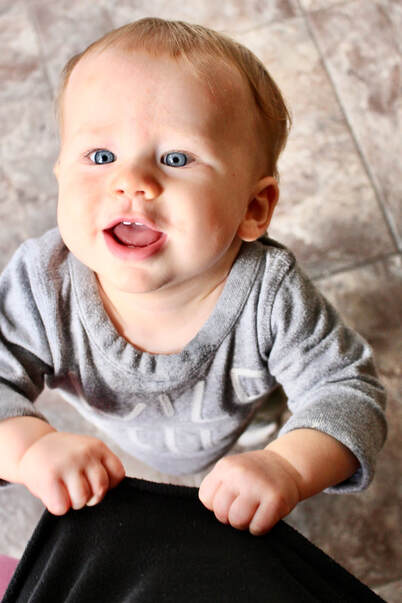


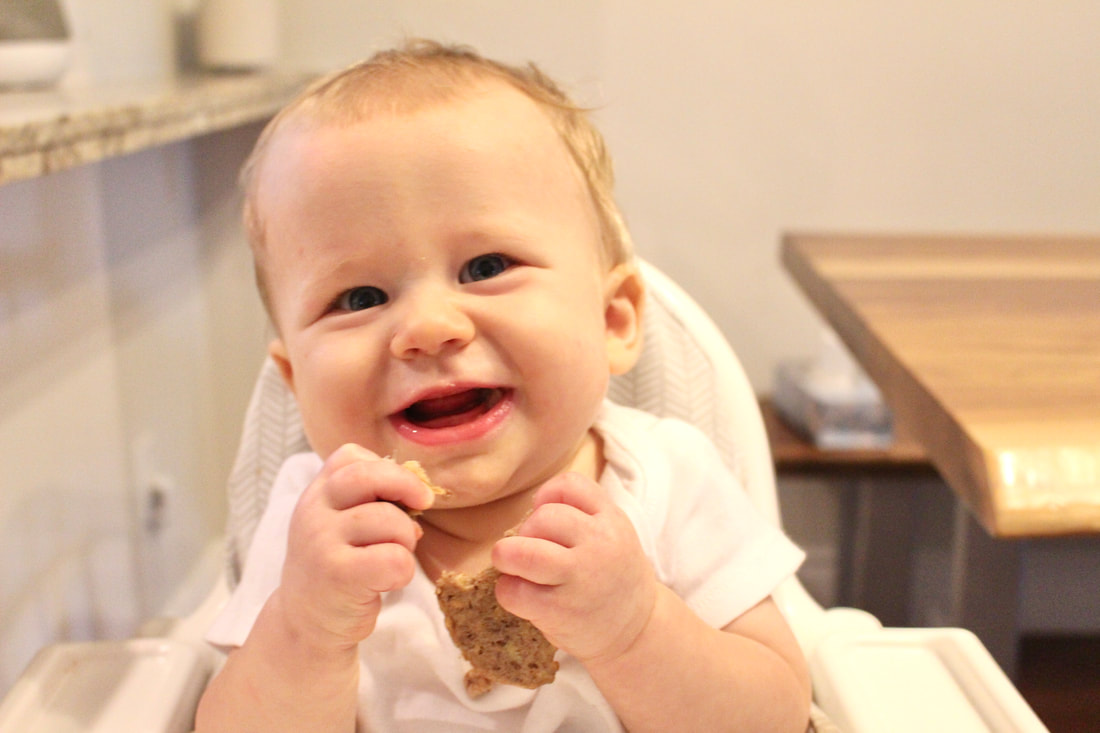

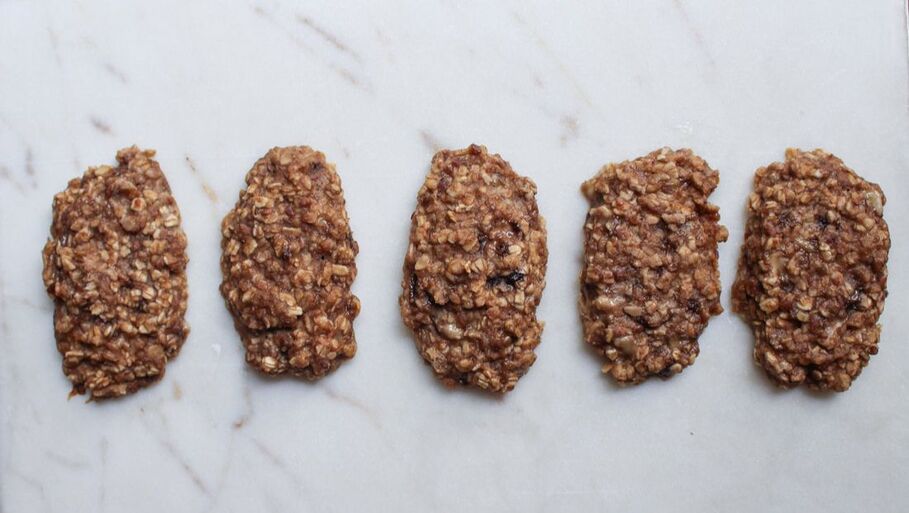
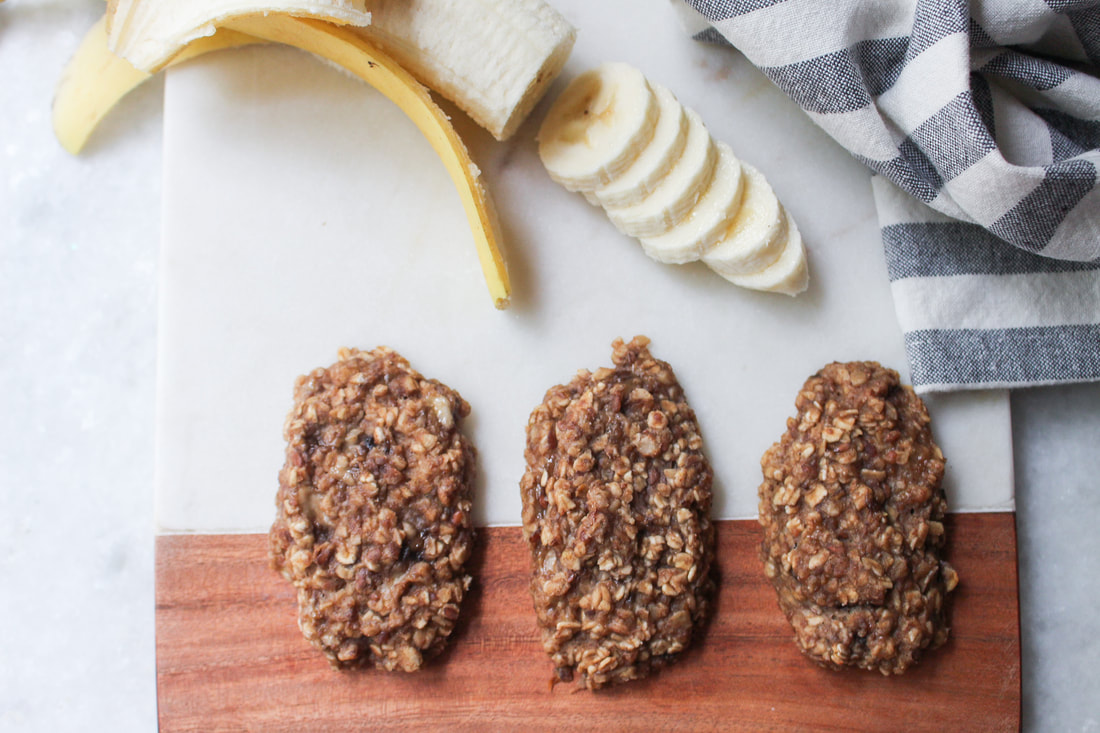
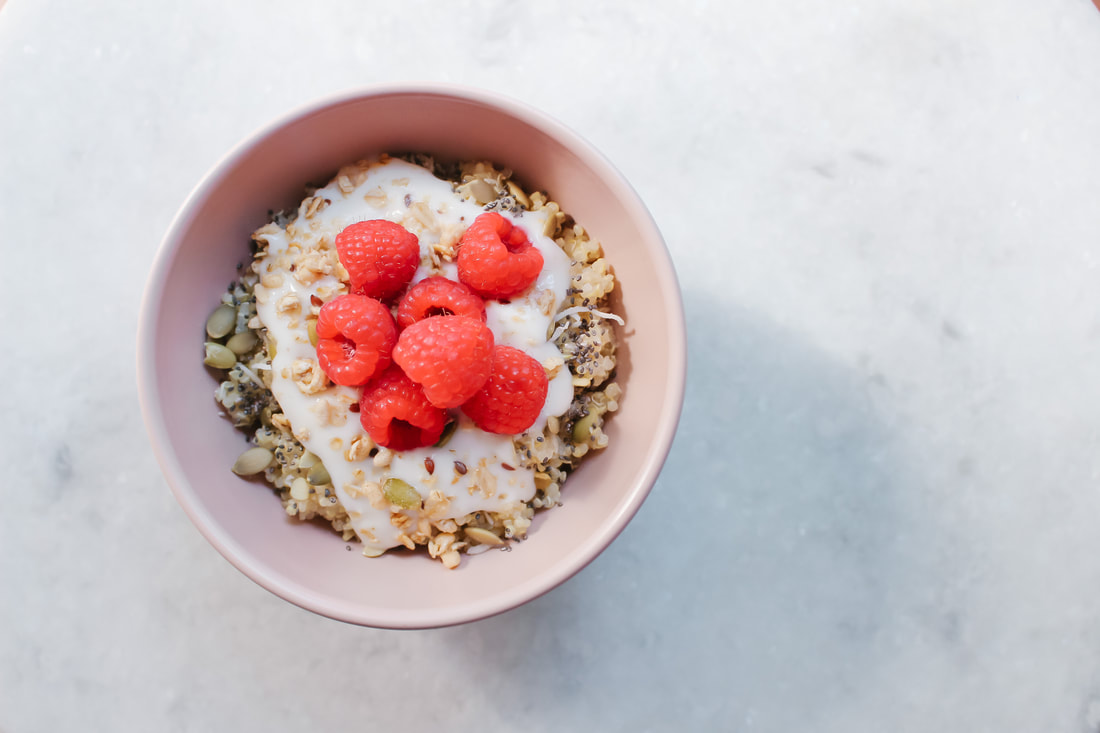
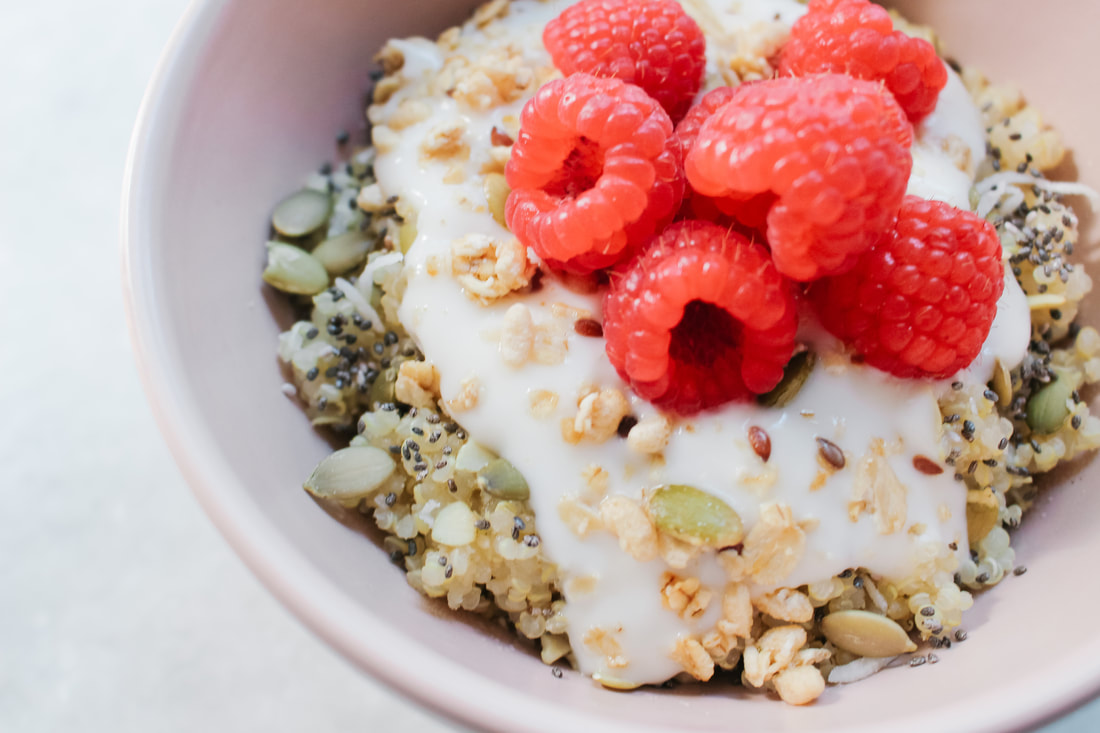

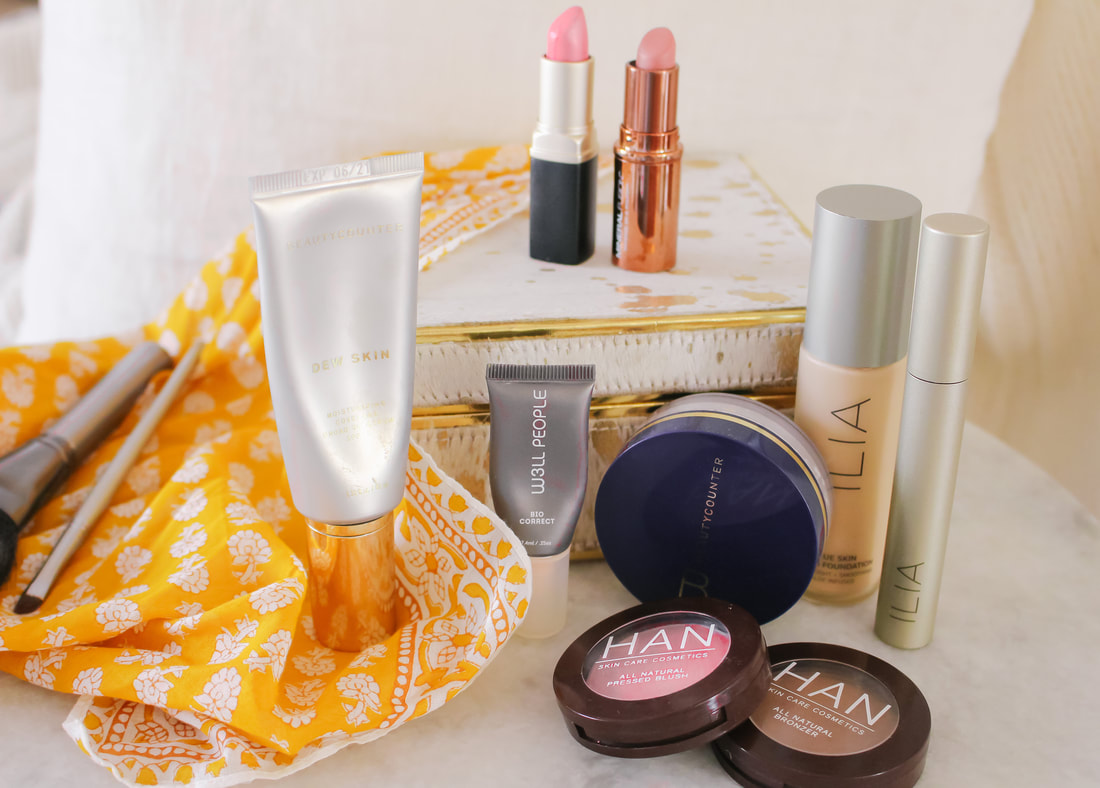

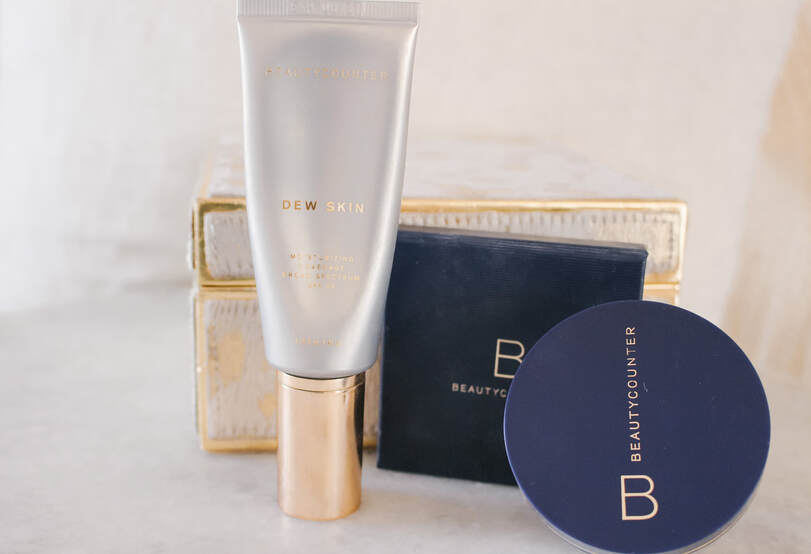
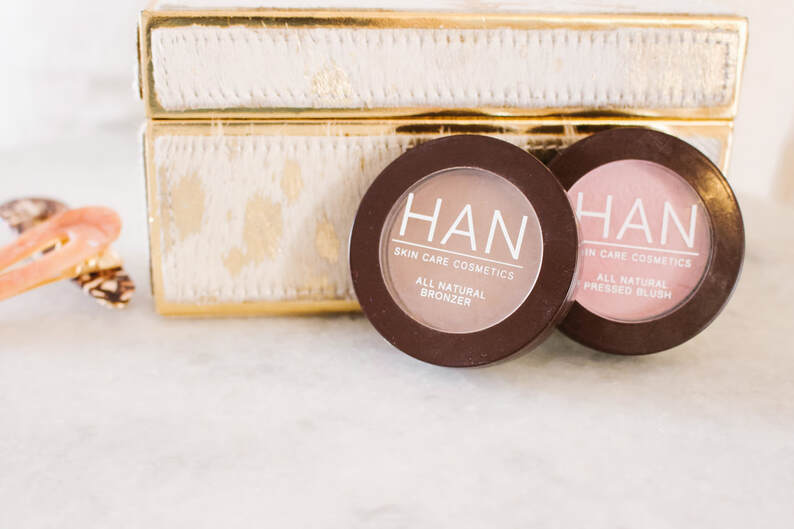
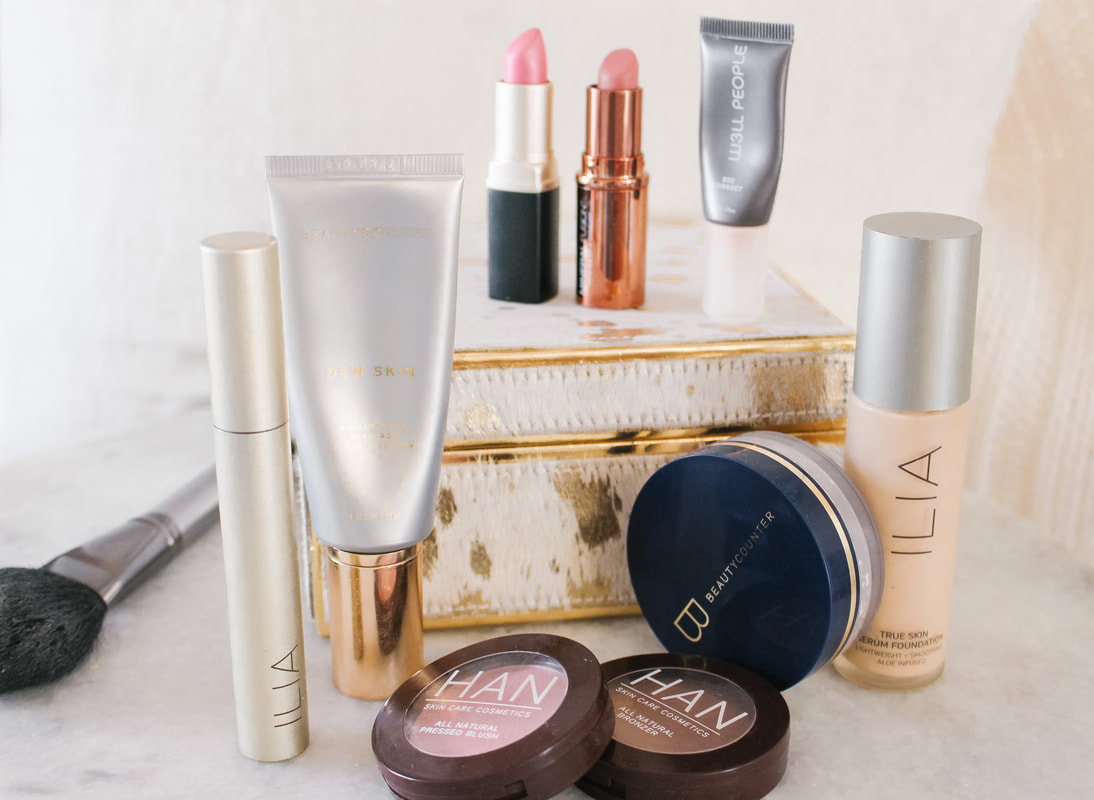

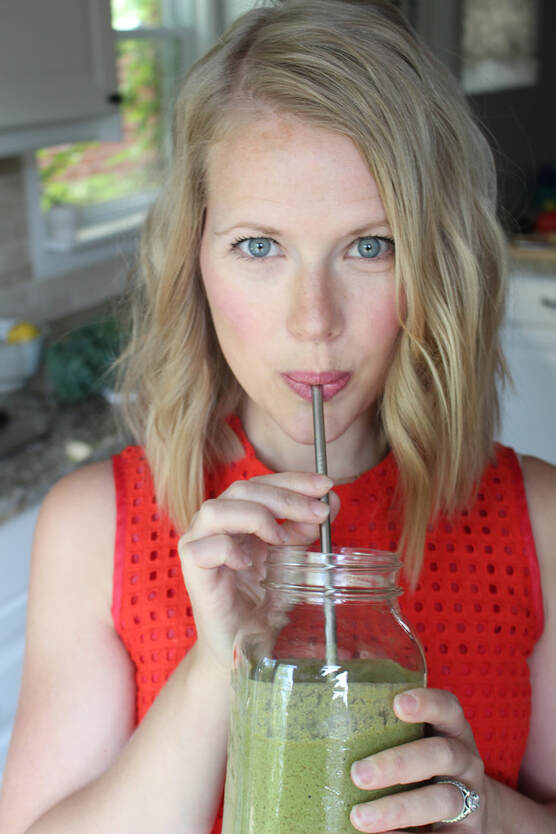


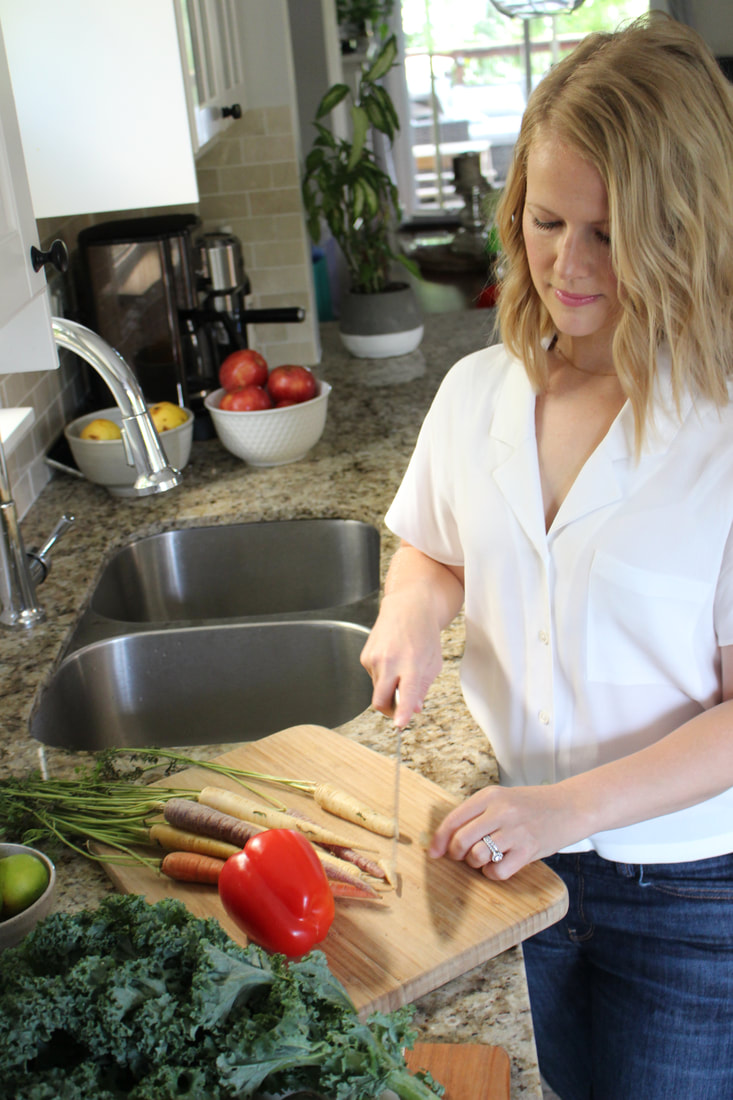

 RSS Feed
RSS Feed